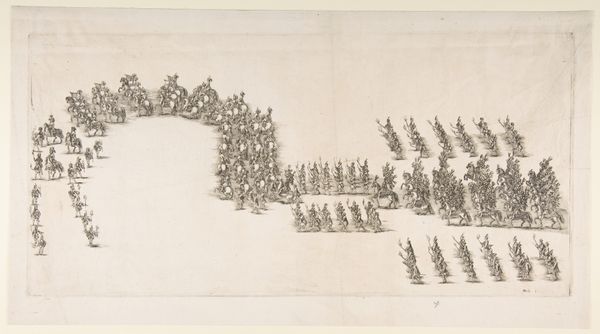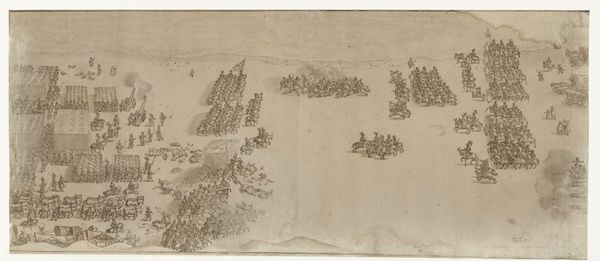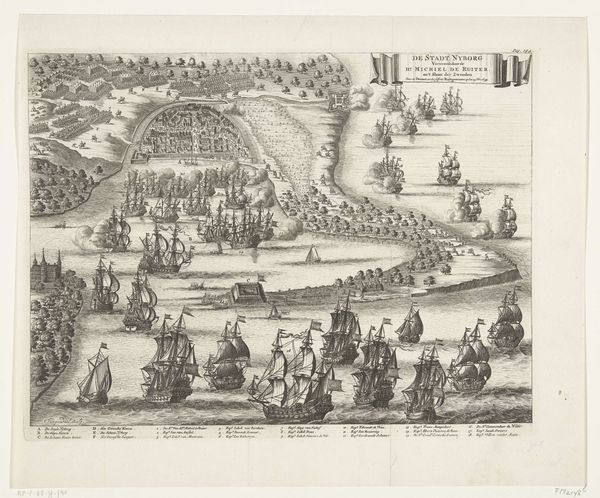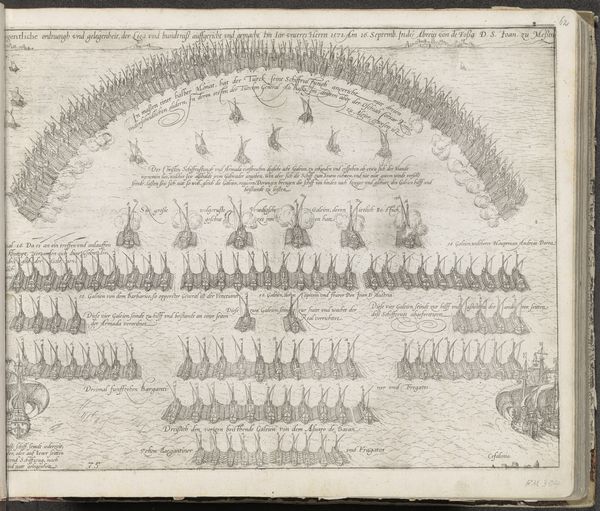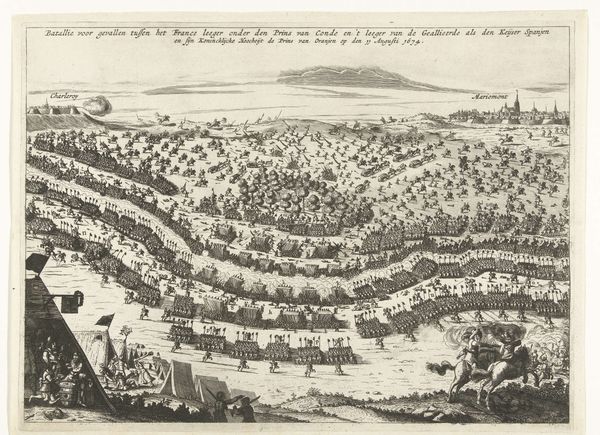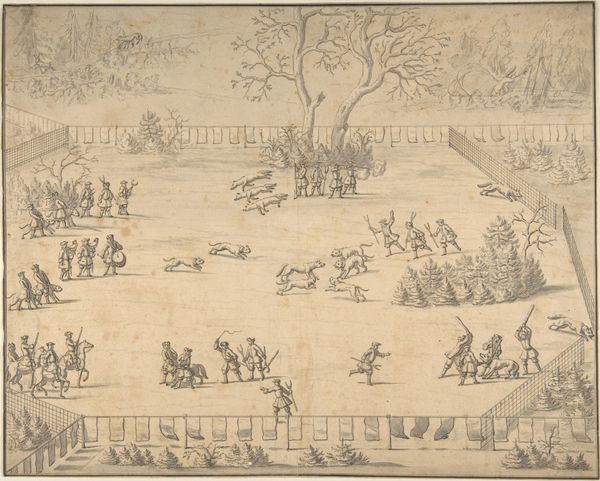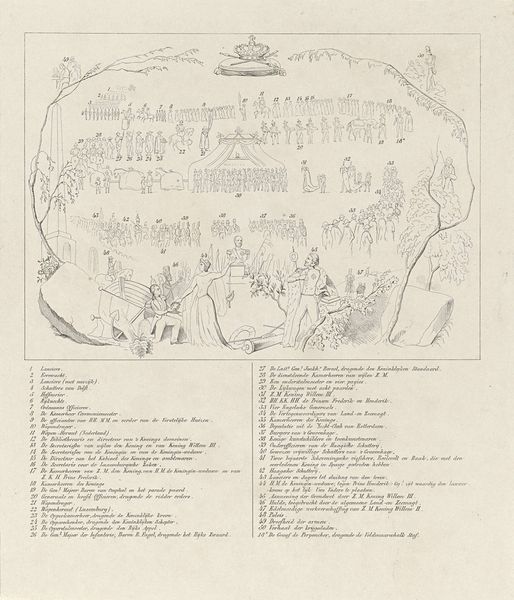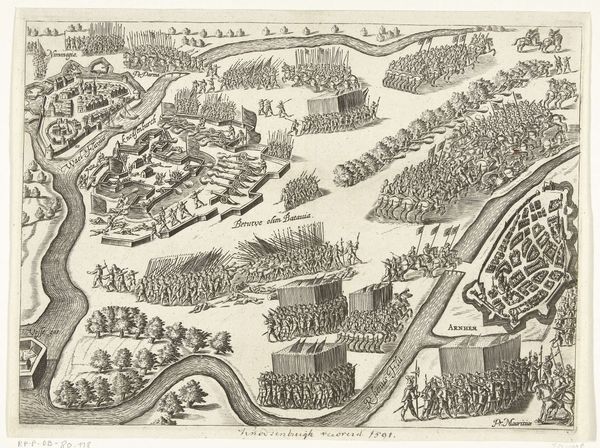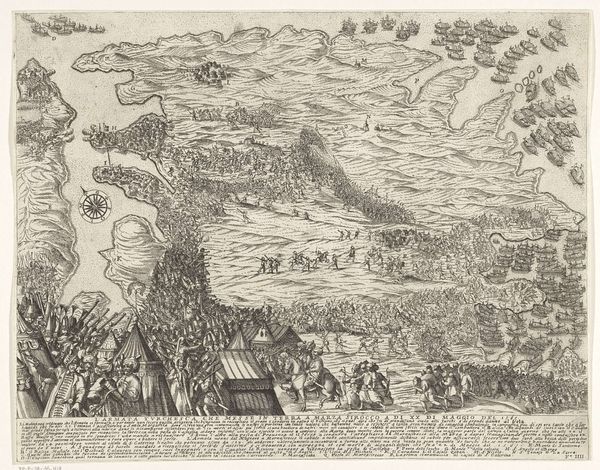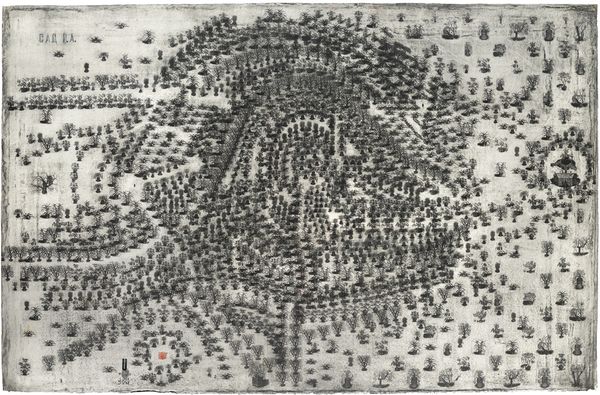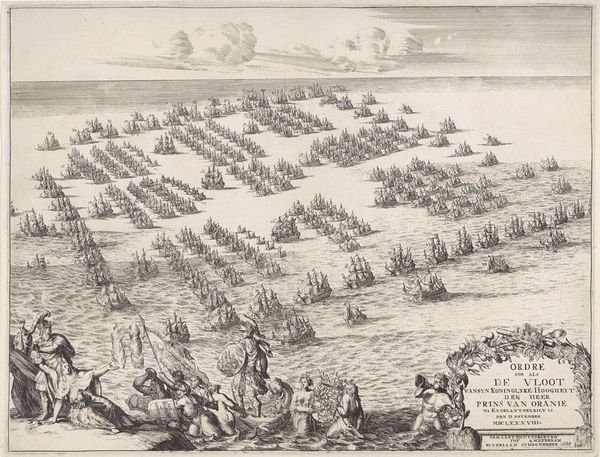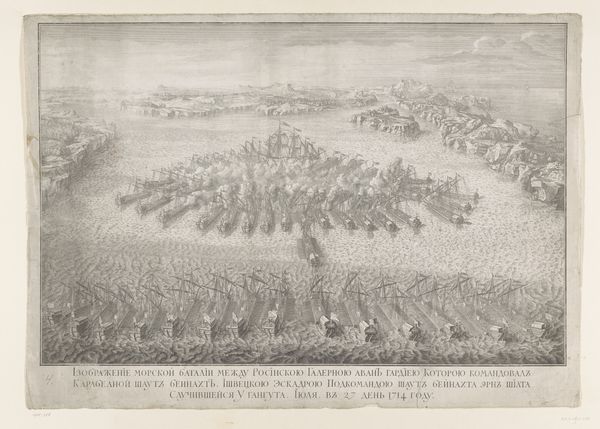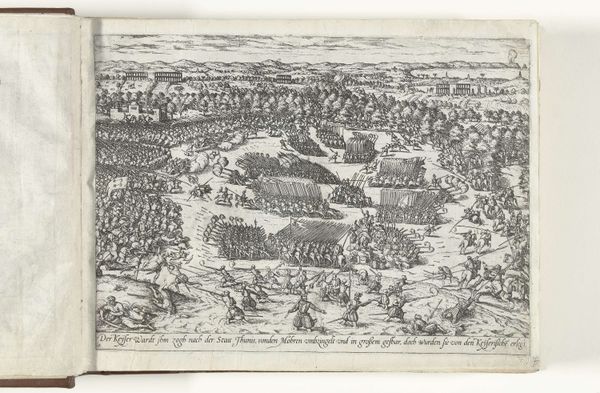
engraving
#
baroque
#
pen sketch
#
old engraving style
#
landscape
#
pen-ink sketch
#
line
#
pen work
#
history-painting
#
engraving
Dimensions: height 292 mm, width 435 mm
Copyright: Rijks Museum: Open Domain
Editor: This is "Cavallerie en infanterie," a 1667 engraving by Jan van Ossenbeeck. The precision of the line work is remarkable. It almost feels less like art and more like a… map? I'm intrigued by its seemingly straightforward depiction of soldiers. What can you tell me about this work? Curator: Well, it's not simply *depicting* soldiers, is it? It's showing them deployed. It begs the question, what's the political economy behind such militarization at this time? Consider the Dutch Golden Age. This wasn’t just about art; it was about power projection. How do we reconcile the "art" with the logistical industry and the very real possibility of forced labor involved in resource extraction that fuelled this period of "prosperity" and allowed artists like Ossenbeeck to exist in the first place? Editor: That's a very interesting way of viewing this; the resources to produce this and support its creation are significant. How did this contrast with typical landscape engravings of the time? Curator: The deliberate order contrasts sharply with idealized pastoral scenes. Also, consider the labor behind creating these massed armies; their clothes, equipment, training, were not born of the ether. How much ink, paper and artist labor went into something designed to disseminate ideas about Dutch power? Are these materials as "neutral" as they appear? What constitutes high art, and what is mere military cartography or even propaganda? It disrupts assumptions regarding where art begins and "mere utility" ends, would you agree? Editor: Yes, I’d have never considered this as such. The detail seemed so impressive before, almost an aesthetic choice in and of itself. But understanding its function as a statement of wealth and militarization, I’m beginning to consider what was sacrificed to achieve it. Curator: Exactly! Recognizing this print’s raw materials allows for critical engagement with the Dutch Golden Age far beyond aesthetics alone.
Comments
No comments
Be the first to comment and join the conversation on the ultimate creative platform.
